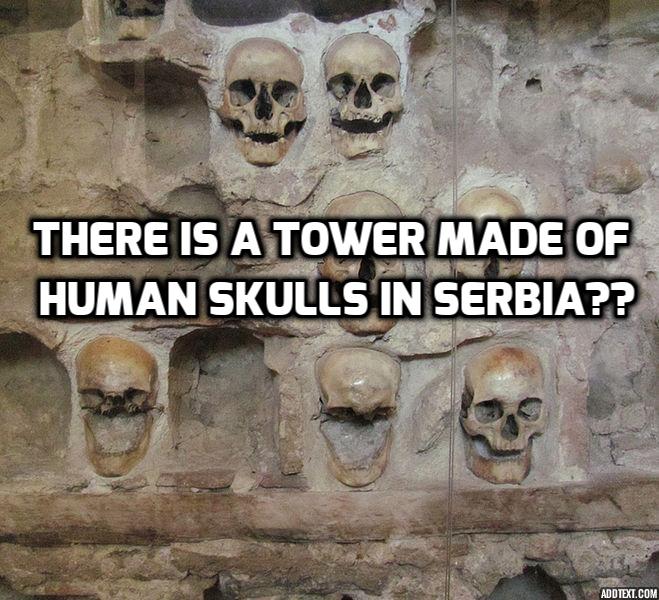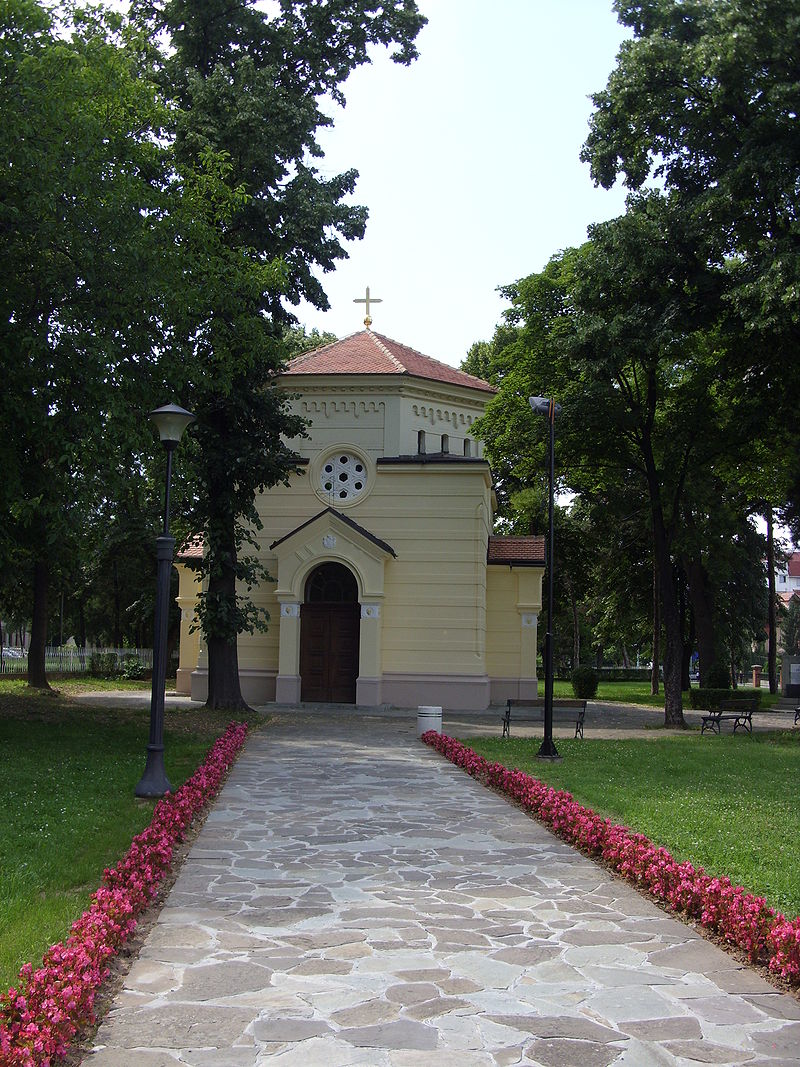There is a tower made of human skulls in Serbia??

The Skull Tower (or Ćele-kula in Serbian) is a tower that was built by a conquering Turkish army in the nineteenth century using the skulls of Serb rebels. Ćele-kula, located in Niš, in southern Serbia, stood as a cautionary tale to remind the Serbian people of what happens to those who resist the Ottoman Empire. What used to be a gruesome monument is now a sort of reliquary that holds the bones of deceased revolutionaries.
After Serbia fell to the Ottoman Empire in 1459, the Serbian people fought in several uprisings to gain their independence. In the Battle of Čegar (1809), during the First Serbian Uprising (1804-1813), commander Stevan Sinđelić led 3000 Serbian rebels. When Turkish forces attacked them on Čegar Hill, near Niš, the Serbian army was overwhelmed and faced certain defeat. So rather than risk execution by impalement, Sinđelić fired his pistol into a powder magazine, and the explosion killed himself, his men, and any nearby Turkish soldiers.
Skull of Stevan Sinđelić on display at the Chapel around the Skull Tower.
The Turkish Grand Vizier of Niš, Hurshid Pasha, wanted to teach the Serbian people a lesson. He ordered the bodies of the rebels be mutilated and decapitated. Their heads were skinned, stuffed with straw, and sent to the Ottoman Sultan Mahmud II in Istanbul. When the skulls were returned to Niš, the Turks built the Skull Tower as a deterrent to the Serbian people so they always remember what happens to those who oppose the Ottoman Empire.
The Turks embedded 952 skulls into 56 rows, and Sinđelić’s skull was placed on top of the 15 ft tower. Since then many skulls have been lost because they either fell out, were pulled out by relatives so they could bury loved ones, or were stolen by tourists to keep as souvenirs. There are now only 54 skulls in the tower.

The Serbs eventually won independence in 1830. In 1892, a chapel was built around the tower, where there is a plaque that reads: “To the first Serbian liberators after Kosovo.” A bust of Sinđelić was installed in 1937 and his skull is now displayed in a glass case. In 1948, Skull Tower and the chapel were declared Cultural Monuments of Exceptional Importance and came under the protection of the Socialist Republic of Serbia.